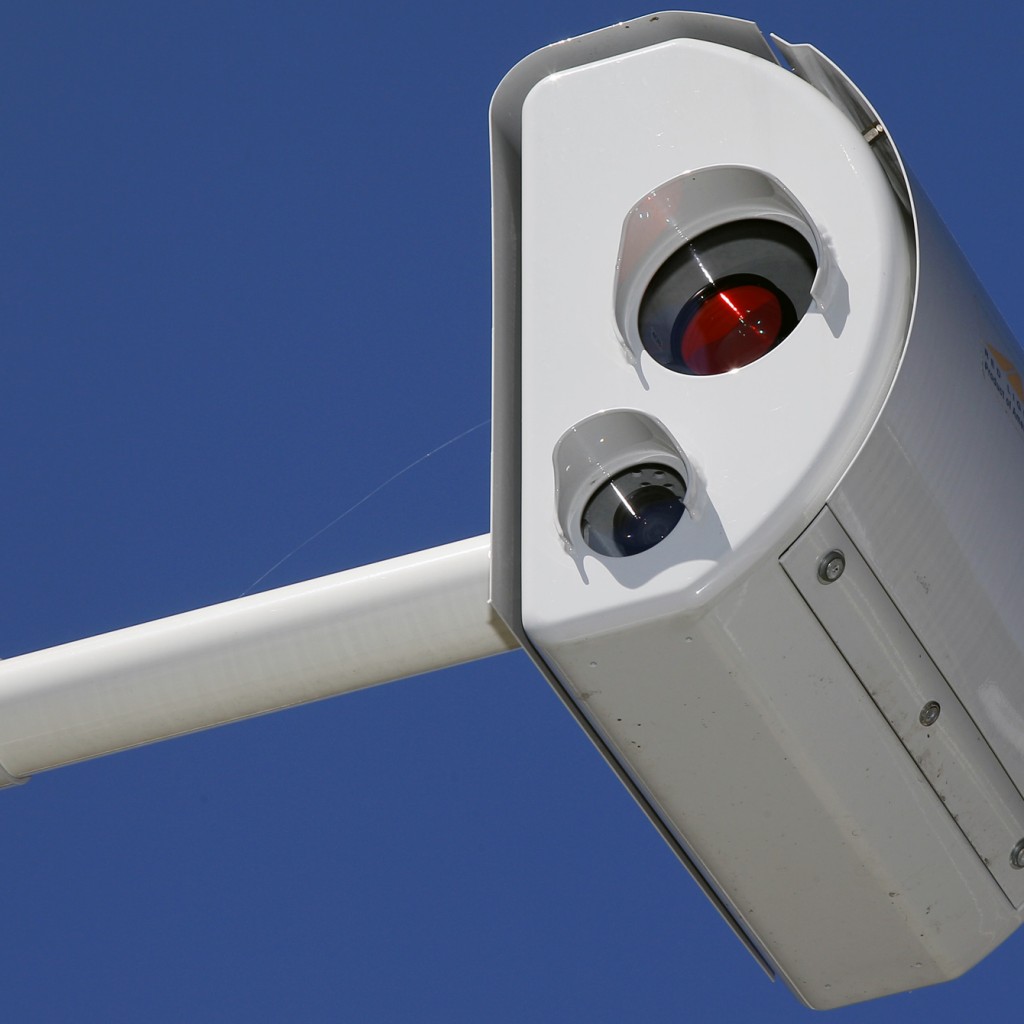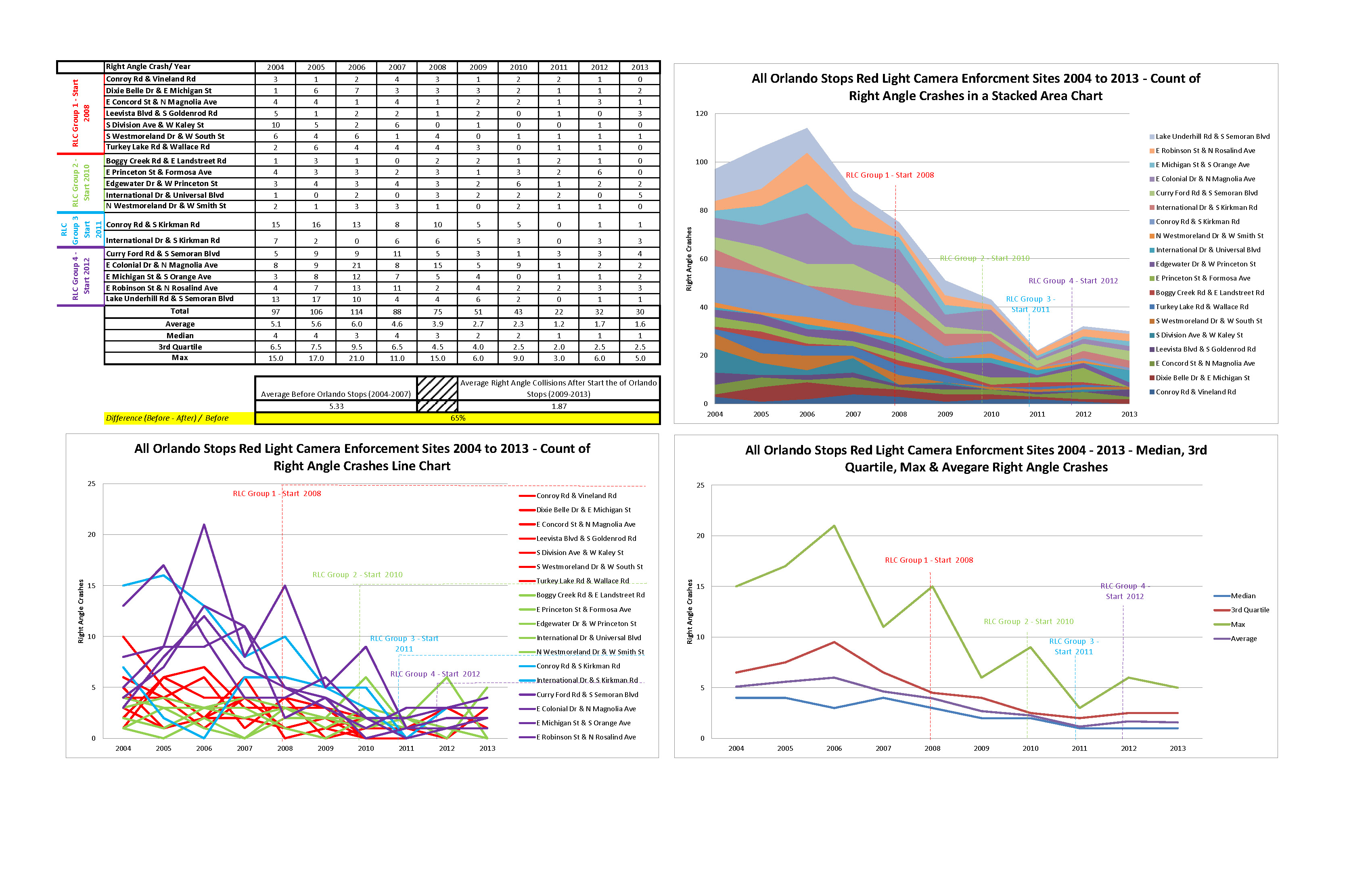
On Nov. 16, 2015, the Orlando City Council approved a Consent Agenda item authorizing the largest-ever expansion and extension of the city’s red-light contract with American Traffic Solutions.
The justification for the expansion was based on dubious safety claims and skewed data. After further investigation, based on responses to public records requests received from the city throughout December, it’s clear that the city manipulated statistics to justify the massive expansion and contract extension.
In looking at the table and charts provided by the city (see below) in response to public-record requests to substantiate its claim of a “65 percent reduction in crashes,” one might think that red-light cameras have been a boon to traffic safety. Nothing could be further from the truth.
To arrive at that number, the city cherry-picked only one type of crash to include. Additionally, the city used unequal before/after time periods for the majority of the monitored intersections.
The city also failed to disclose engineering countermeasures, such as signal head and other equipment upgrades, lengthening of the “all-red” clearance interval, signal synchronization, changes in traffic volume, and crash causation (i.e., crashes caused by red-light running).
Perhaps the most damaging to the credibility of the city’s “report,” however, is the omission of some right-angled crashes — whether intentional or not — at several intersections sampled for 2013.
Analysis of the Data in the Table and Charts
A sample of five intersections was chosen for testing against 2013 electronic crash report data obtained directly from the Florida Department of Highway Safety and Motor Vehicles (DHSMV).
Crash events were narrowed down by right-angle collisions at the selected intersections, and discrepancies were found for all five. At the intersection of Conroy and Vineland, the city reported no angle crashes in 2013. According to DHSMV data, there were three.
At Division and Kaley (where there has been no photo enforcement in operation since September 2011), the city reported no angle crashes in 2013. According to DHSMV data, there were two.
At Conroy and Kirkman, the city reported one angle crash, but DHSMV data reflects four. At Turkey Lake and Wallace, the city said no angle crashes, while DHSMV data indicates one.
Finally, at Westmoreland and Smith, the city again said no angle crashes while there was one according to DHSMV data. Hard copy crash reports were requested for the first six crashes to corroborate these findings with the DHSMV data. These were received on Dec. 21.
For the third crash report requested (Conroy and Vineland), only an incident report instead of a full crash report could be provided. The sixth crash report (Division and Kaley) reflected the angle crash was occurring at an indeterminable distance to the west of the crosswalk, so it was excluded.
In addition to the material discrepancies between crash angle totals at the selected intersections for testing — which alone are enough to debunk the city’s claim of a dramatic “65 percent reduction” — the city’s usage of unequal before and after time periods makes the city’s claim worthless.
For example, three intersections in “RLC Group 1 — Start 2008” (Dixie Belle Dr and E Michigan St, S Division Ave. and W Kaley St, and S Westmoreland Dr. and W South St) and two intersections in “RLC Group 2 — Start 2010” (E Princeton St. and Formosa Avenue and Edgewater Dr. and W Princeton St) terminated photo enforcement in September 2011. For the remainder of the intersections in group two, the city only has three years of post-installation data. In “RLC Group 3 — Start 2011,” the city only has two years of post-installation data, and “RLC Group 4 — Start 2012” has only one year of post installation data. This also doesn’t account for partial years — i.e., group four began in August 2012.
Report Analysis Conclusion
The city’s skinny “report” shows clear manipulation of data. It would never pass an audit, and it would be ripped apart if it were peer-reviewed. As stated in the above sections, the lack of total crash breakout into types and causes, usage of unequal before/after time periods, lack of controls for traffic volume changes and engineering countermeasures.
The material discrepancies between the city’s self-reported data and official crash data from the DHSMV all make the city’s report entirely worthless.
What Should Happen Next?
The public’s confidence that this is a safety program will be severely shaken based on this brief analysis. Since Orlando’s contract with ATS states “ … Contractor agrees to install and operate camera systems for up to an additional 30 approaches …,” it appears that this is not a must.
Therefore, the city should freeze the expansion of the program, and it should conduct a thorough analysis using proper controls and methodologies in line with academic research institutions to find out what impact (if any) the city’s red light camera system has actually had on safety.




